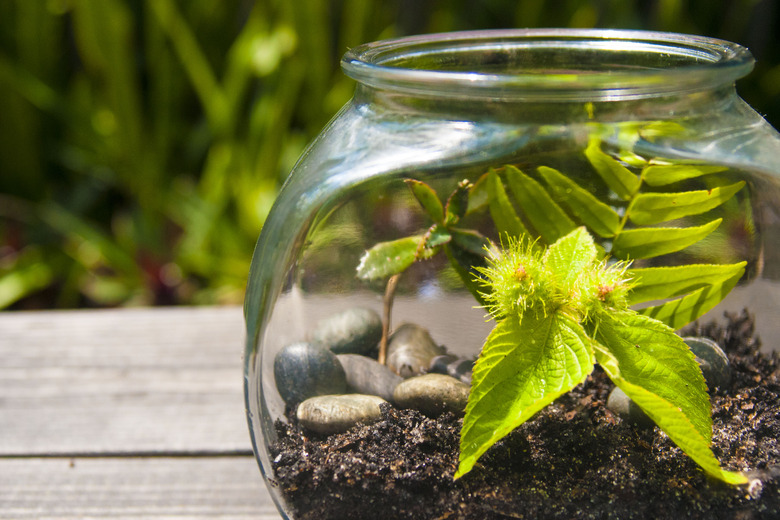How To Build An Ecosystem
Having a little slice of nature to help bring character to your home or bedroom can be incredibly rewarding. Most people love adding indoor plants to bring a bit of greenery inside to spruce up their space – you might even have a potted plant or two hanging around. However, potted plants can require a bit of work with watering and fertilizing.
That's the beauty of a self-sustaining plant ecosystem. You can make your own ecosystem in a jar, and it requires very little maintenance to keep things green and healthy. You just need to know how to build a mini ecosystem!
What Is an Ecosystem?
What Is an Ecosystem?
Before creating an ecosystem or constructing a terrarium, you should brush up on what an ecosystem actually is and how it works. An ecosystem contains all biotic and abiotic elements in an area, interacting and cycling energy. All of the plants, insects, birds, mammals and other living things interacting with one another make up part of the ecosystem, as do all the nonliving things like the air, water, soil, minerals and sunlight.
By their nature, ecosystems cycle these biotic and abiotic elements to sustain themselves. By combining the right elements, you can make your own ecosystem in a jar.
How to Make an Ecosystem
How to Make an Ecosystem
Things Needed
- Clear sealable jar (preferred) or plastic container – mason jars work well for this purpose
- Small pebbles or stones for drainage
- Soil – sterile potting soil works best
- Plants – mosses and other small plants work well for this purpose
- Decorative elements – put your own spin on it and use unique rocks, driftwood, even figurines or toys
Create Your Drainage Layer
Create Your Drainage Layer
Take an assortment of small pebbles or stones and layer them along the bottom of the jar. For a wider surface area that fits more plants, place the jar on its side. This layer of pebbles or stones works to drain excess water away from your plants and their roots and prevent any rotting. The unused water drains to the bottom of the jar and eventually evaporates and rises to the "ceiling" of the jar where it condenses and then rains back down on your plants, providing them with moisture.
Add Your Soil
Add Your Soil
Next, you'll want to create a layer of soil over the top of your drainage layer. Add enough soil that the layer is at least twice as thick as the drainage layer, but take care to leave plenty of space for your plants. You'll also want to make sure your plants have room to continue growing within the jar.
Collect and Add Your Plants
Collect and Add Your Plants
You can collect your plants directly from outside or purchase plants from your local home improvement store. It's important to select the most compatible plants when constructing a terrarium. Your plant ecosystem will have high humidity and be relatively moist, so dry-weather plants like cacti will not thrive. Mosses, ferns and lichens are all great options. If you're collecting mosses or ferns from your backyard, you can collect the nearby soil they are growing in as well.
Once you've added your plants, you'll need to make sure they have enough moisture to sustain themselves. Don't soak them with water – provide just enough to moisten the soil.
Add Your Decorative Elements
Add Your Decorative Elements
If you'd like, you can take this opportunity to add any decorative elements you'd like. You could add natural elements, like sticks, rocks or driftwood. Conversely, you could choose to add "unnatural" elements to make the plant ecosystem your own, such as your favorite figurines. When you're finished, seal the jar and place it in a well-lit room, but not in direct sunlight.
Cite This Article
MLA
Zinni, Yasmin. "How To Build An Ecosystem" sciencing.com, https://www.sciencing.com/build-ecosystem-5507650/. 20 October 2021.
APA
Zinni, Yasmin. (2021, October 20). How To Build An Ecosystem. sciencing.com. Retrieved from https://www.sciencing.com/build-ecosystem-5507650/
Chicago
Zinni, Yasmin. How To Build An Ecosystem last modified August 30, 2022. https://www.sciencing.com/build-ecosystem-5507650/
